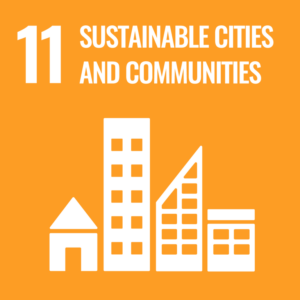
11. Sustainable Cities and Communities
11.2. Support of arts and heritage
11.2.2. Public access to libraries
Perpustakaan Fakultas Ilmu Komputer Universitas Indonesia bediri pada tahun 1975, yang pada awalnya dikenal sebagai perpustakaan Pusat Ilmu Komputer (Pusilkom), pada awalnya berfungsi sebagai pendukung penelitian dan pengolahan data ujian masuk UI. Seiring dengan perkembangan teknologi pada tahun 1986 dibuka Program Studi Ilmu Komputer (Prosilkom), dan pada tanggal 21 Oktober 1983, Fakultas Ilmu Komputer, (Fasilkom UI) resmi terbentuk berdasarkan Surat Keputusan Mendikbud No. 0370/O/1983, Perpustakaan berfungsi sebagai pendukung Pendidikan, Penelitian dan Pengajaran hingga saat ini.
Dengan didukung system informasi yang berbasiskan kepada teknologi informasi yaitu digital library online information system maka pengunjung dapat mengakses koleksi-koleksi yang disediakan seperti: Koleksi Buku, Koleksi Majalah, Koleksi Non Buku, Koleksi Book Elektronik, serta karya yang dihasilkan segenap civitas academica Fakultas Ilmu Komputer.
Evidence: Document
11.2.4. Public access to green spaces
The area of the Faculty of Computer Science is surrounded by many trees, including the banyan trees and kapok trees, that make the Faculty of Computer Science look beautiful. We also have Taman Akademos that is located between buildings A, B, and C. Gardens and green spaces in the Faculty of Computer Science are open to the public and can be visited for free.
Evidence: Document
11.2.5 Arts and heritage contribution
The Faculty of Computer Science actively contributes to preserving cultural heritage. In the Faculty of Computer Science, students and staff are encouraged to wear traditional Indonesian clothing, Batik, at least once a week. In fact, the Faculty of Computer Science made Batik as one of the employees’ uniforms. The Faculty of Computer Science also has a Uluwatu Orcestra.
Evidence: Fasilkom Youtube
11.2.6. Record and preserve cultural heritage
Cultural heritage is the root of national identities, and contributes to tourism, economics, industry, and business aspects. Digital preservation of cultural heritage is thus crucial. Available cultural heritage information on Web sources (e.g., Wikipedia) is provided in multiple formats, such as free-form text, lists, and tables, all of which lack structures and links to other information sources. BudayaKB (or in English, CultureKB) serves as an RDF knowledge base of Indonesian cultural heritage, that is both structured and linked, paving new ways for consuming cultural heritage information. The content of BudayaKB is automatically extracted from the province and city pages of Indonesian Wikipedia, taking into account the heterogeneous formats of cultural heritage information (i.e., text, lists, and tables), and is linked to Wikidata, enabling greater interoperability. BudayaKB is developed by Hadi Syah Putra, Rahmad Mahendra, and Fariz Darari from Universitas Indonesia. Our paper about BudayaKB has been accepted at WIMS 2019 in Seoul, South Korea
Evidence: Document
11.3. Expenditure on arts and heritage
11.4. Sustainable practices
11.4.1. Sustainable practices targets
Evidence: Document
11.4.2. Promote sustainable commuting
The Faculty of Computer Science strives to promote sustainable commuting by making a notice regarding the limitation of car parking areas at the faculty in hopes that students, staff, and guests will prefer to use public transportation or walk when they are going to and from the faculty. We also have pedestrian paths that prioritize comfort and consider human aspects, such as circulation, nature and climate, safety, cleanliness, and beauty.
Evidence: Document
11.4.3. Allow remote working
11.4.4. Affordable housing for employees
11.4.5. Affordable housing for students
11.4.6. Pedestrian priority on campus
Pedestrian paths in the Faculty of Computer Science are equipped with facilities for people with visual impairment. We also prioritize comfort and consider human aspects, such as circulation, nature and climate, safety, cleanliness, and beauty when we build the pedestrian paths. In the Faculty of Computer Science, we also separate vehicle and pedestrian paths to ensure the pedestrian’s safety, installing streetlights, and paths that could be used by people with disability, such as ramp and tactile paving.
Evidence: Document
11.4.7. Local authority collaboration
11.4.8 Planning development
Renovasi yang dilakukan untuk Gedung Baru Fasilkom UI telah mencoba mengikuti standar yang diinginkan oleh UI yaitu Green Building
Evidence: Document
11.4.9. Building on brownfield sites
